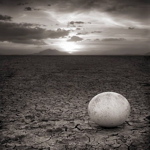What is your configuration casey ?
PS : I try the map for cubase/nuendo (d8b) via "import" button and nothing's change, what's wrong ?
-Mick
Mackie D8B on Cubase
Re: Mackie D8B on Cubase
mick2mars wrote:What is your configuration casey ?
PS : I try the map for cubase/nuendo (d8b) via "import" button and nothing's change, what's wrong ?
-Mick
Did you load the both the .xml file for cubase/nuendo and the d8b map?
I have my midi I/O run through my RME HDSP9652 port 1. Is there another configuration that your asking about?
-Casey
d8b V3 into RME HDSP 9652 with Cubase 7.5
-
Casey_Pittman - Premium Member

- Posts: 342
- Joined: Mon Aug 31, 2009 10:51 pm
- Location: Texas
Re: Mackie D8B on Cubase
No i don't load the d8b map because i don't have a disk already, but the RME HDSP9652, i don't know this card, can you explain to me how this running? like the M-Audio Profire ? i mean by the optical output ? (3 ADAT cards) ?
- mick2mars
- Registered user
- Posts: 41
- Joined: Tue Mar 29, 2011 7:13 pm
- Location: Marseille, France
Re: Mackie D8B on Cubase
Ok, If you don't load the midi map file into the d8b when you load the xml file into cubase then it wont work at all. There has to be a two way communication between the two(d8b & cubase). The d8b has to know what paramaters are to be mapped and on what midi communication channels(not the 8 physical midi channels on the d8b. These have nothing to do with mapping functions) to send the information to the DAW software(cubase)) Cubase in turn takes this information in the Generic devices window and routes the communication data to the functions in the software(the xml file)
Here is a link to the HDSP9652 http://www.sweetwater.com/store/detail/HDSP9652
Your pro fire light bridge does the same thing just over a firewire connection. you also have a midi/spdif port on the unit. As long as you have the breakout cable that should have come with the unit you do not need a midi to usb adapter interface that you mentioned in an earlier post.
Back on subject. The d8b needs to have a midi map file loaded as well as cubase having a xml file loaded into a generic device(which I explained how to set up a few posts back). At the same time a working midi connection needs to be present for this to work. If all of these things are not present and working then you will not beable to map anything.
-Casey
Here is a link to the HDSP9652 http://www.sweetwater.com/store/detail/HDSP9652
Your pro fire light bridge does the same thing just over a firewire connection. you also have a midi/spdif port on the unit. As long as you have the breakout cable that should have come with the unit you do not need a midi to usb adapter interface that you mentioned in an earlier post.
Back on subject. The d8b needs to have a midi map file loaded as well as cubase having a xml file loaded into a generic device(which I explained how to set up a few posts back). At the same time a working midi connection needs to be present for this to work. If all of these things are not present and working then you will not beable to map anything.
-Casey
d8b V3 into RME HDSP 9652 with Cubase 7.5
-
Casey_Pittman - Premium Member

- Posts: 342
- Joined: Mon Aug 31, 2009 10:51 pm
- Location: Texas
Re: Mackie D8B on Cubase
OK I understand that all, thank you, I don't know who's the better, a PCI Card or a Firewire interface.
and for all connections (Monitoring, Phantom XLR ect...) We use the port on the d8b ? all the port are recognize with Cubase ?
Sorry for all the questions but it's the first time i use this kind of material
Thanks !
- Mick
and for all connections (Monitoring, Phantom XLR ect...) We use the port on the d8b ? all the port are recognize with Cubase ?
Sorry for all the questions but it's the first time i use this kind of material
Thanks !
- Mick
- mick2mars
- Registered user
- Posts: 41
- Joined: Tue Mar 29, 2011 7:13 pm
- Location: Marseille, France
Re: Mackie D8B on Cubase
mick2mars wrote:OK I understand that all, thank you, I don't know who's the better, a PCI Card or a Firewire interface.
and for all connections (Monitoring, Phantom XLR ect...) We use the port on the d8b ? all the port are recognize with Cubase ?
Sorry for all the questions but it's the first time i use this kind of material
Thanks !
- Mick
PCIe is generally considered the better option. The d8b ports can be used, but it is independent of using the interface to get in and out of the computer, the latency values change the many ways to hook up d8b or also computer interface (PCIe/bridge/etc).
You use the interface to get into Cubase and control (with MIDI map or HUI) the Cubase program with the d8b controls.
Separate from that (you can do this), use d8b ports into the interface to get in/out of Cubase. The key, the idea, the great thing about all this is that it is flexible and you can really do what works best for you. There are some things that plain will not work because the units are not able to "talk" to each other, but for the most part once you set up the communication the d8b is exceptionally flexible. It is one of the many great things about this mixer.
So the answer is yes. and for all connections (Monitoring, Phantom XLR ect...) We use the port on the d8b ? all the port are recognize with Cubase ? The thing to remember is that the d8b can control Cubase (MIDI map or HUI) but Cubase does not control the d8b. And the d8b can send and receive signal via the interface which gets it into the Cubase program (if you are using the d8b ports).
There are many ways, but the ports and controls need to match, if you are using the d8b to control (MIDI map/HUI) Cubase, then you are using the interface ports. If you are using the d8b ports then you are using the interface to get into the Cubase program -just like putting something like a mic-pre in front of the interface, but instead of a pre-amp it is the d8b. You will introduce all sorts of latency issues so the preferred method (simplest) is to use the d8b as a control either by MIDI map or HUI --- and hopefully to come soon Marc and Frank's project. But again there are many ways and the way that works the best for you is the best way.
Please someone correct me if I am wrong here - I am trying to explain complicated things with simple analogies.
Anyway I most likely got everything even more confused now (I have a way of doing that...
Michael
-

High C Double G - Premium Member

- Posts: 325
- Joined: Tue Nov 25, 2008 3:55 am
Re: Mackie D8B on Cubase
mick2mars wrote:Sorry for all the questions but it's the first time i use this kind of material
Then you jumped head first into the deep end my friend!!
That is not meant to be discouraging at all.
you already have the lightbridge, don't go changing something that can do the job just because you've found something else prettier. Lets stick with what we know for now until we get comfortable.
All of your audio connections can be handled by the d8b and are capable of transferring to the lightbridge and on into cubase. Assuming that you have adat cards installed in the rear of the d8b.
To activate the I/O ports inside of Cubase for the lightbridge you need to go to devices-device setup and select something along the lines of VST audio system with your interface below it. Click on your interface and it should bring up a screen showing all of your I/O for the interface and you can check the box to activate them.
Now if I'm understanding what your wanting to do, you are just wanting to use the d8b as a control surface for cubase via midi mapping and monitoring your master output through the control room section on the d8b.
If this is wrong then don't even bother reading the rest of this post.
If i were you I would set up my mic/line bank 1-24 as my analog interface. Meaning all the mics plug into this bank and the signals are sent via adat to cubase to record.
I would then midi map the Tape in layer 25-48 as the DAW controller. Giving you 24 faders, pans, mutes and rec/rdy(via the assign button). There are a few other cool tricks that can be done once all the necessities are in place.
Now your mixing ITB and monitoring your mix through the spdif output of the lightbridge to the Digital IN 2 input of the control room section of the d8b.
To me if I mixed ITB this is how I would do it. Its simple and can get the job done.
If you cant get a floppy to install the midi map let me know and I can help you with programming a new one.
I can also help you in programming the generic device in cubase.
-Casey
d8b V3 into RME HDSP 9652 with Cubase 7.5
-
Casey_Pittman - Premium Member

- Posts: 342
- Joined: Mon Aug 31, 2009 10:51 pm
- Location: Texas
Re: Mackie D8B on Cubase
Just as a matter of mentioning, Cubase can control the d8b.
Peter
Peter
In the scheme of things, there isn't one... just chaos.
-

anyhorizon - Premium Member

- Posts: 1069
- Joined: Fri Nov 21, 2008 9:36 pm
- Location: Down under or up over, depending on where in space you are.
Re: Mackie D8B on Cubase
anyhorizon wrote:Just as a matter of mentioning, Cubase can control the d8b.
Peter
That is correct! I forgot to touch on that, thanks Peter.
-Casey
d8b V3 into RME HDSP 9652 with Cubase 7.5
-
Casey_Pittman - Premium Member

- Posts: 342
- Joined: Mon Aug 31, 2009 10:51 pm
- Location: Texas
Re: Mackie D8B on Cubase
Hi, sorry i doesn't have the lightbridge for the moment, i ask how i can do and which it's the better between 2 products (RME & M-Audio), i read you but i don't have my reply (i don't really understand your response).
Where you connect your phantom XLR or else ? on the D8b or in an interface (other)?
Thank you ^^
Where you connect your phantom XLR or else ? on the D8b or in an interface (other)?
Thank you ^^
- mick2mars
- Registered user
- Posts: 41
- Joined: Tue Mar 29, 2011 7:13 pm
- Location: Marseille, France
Who is online
Users browsing this forum: Google [Bot] and 30 guests